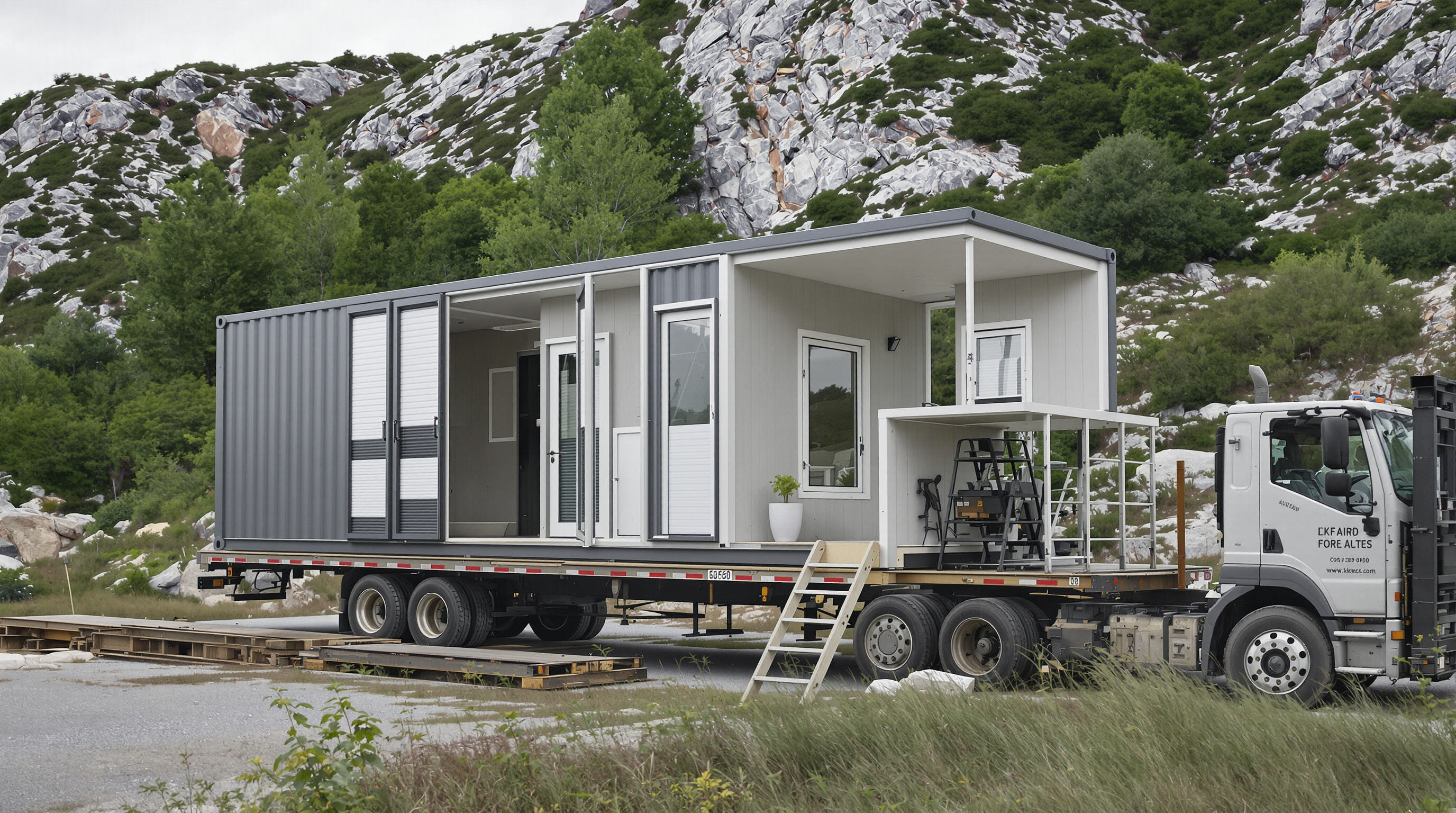
Camping detachable container houses combine innovative engineering with practical mobility, offering durable, rapidly deployable shelter solutions for remote and temporary use. Below, we examine the key design elements that enhance portability and usability.
Modular designs work with standard parts that fit together like puzzle pieces, allowing people to rearrange them however they want without compromising the strength of the whole structure. These kinds of setups are great for temporary bases or when someone needs to expand their living area over time. On the other hand, there are these folding versions too. They have hinges built into the walls and roofs so everything can fold down vertically.
When it comes to flat pack systems, they break down into these really compact panels that stack on top of each other super well, which cuts down on shipping expenses quite a bit. Take a standard 20 foot unit for instance it gets compressed down to around 1.2 meters tall, making it possible to ship multiple units together in one go. The assembly process is made easier thanks to those color coded joints and threaded connectors. Most designs actually don't require anything fancy for putting them back together either just some basic hand tools will do the trick right there at the installation location. Pretty clever stuff when thinking about logistics and cost savings.
Advanced configurations achieve full setup in under three hours—70% faster than traditional construction methods—thanks to pre-installed insulation, electrical conduits, and slide-out flooring. Tool-free locking mechanisms and intuitive assembly processes allow non-specialists to erect these units independently, a crucial benefit in areas lacking skilled labor.
These features ensure reliable reuse across more than 50 relocation cycles while preserving weather resistance and safety standards.
Modern modular container homes are built tough enough to handle pretty serious weather conditions. The special sealing systems and extra strong joints mean these structures can stand up to winds blowing at around 70 miles per hour or 113 kilometers per hour, which makes them great options for places near the coast or on hillsides where wind tends to pick up speed. When it comes to keeping water out, builders use high quality silicone seals similar to what's found on boats, paired with durable 320D polyester walls that have been put through their paces during tests involving non-stop rain for three whole days straight. Another smart design feature is the cross bracing in the steel framework. This not only stops twisting when pressure builds up but also helps explain why so many of these containers get reused again and again at different locations – somewhere around 85% according to industry stats.
When it comes to handling heavy snow loads, structures with roof slopes ranging from 25 to 35 degrees work best when combined with those corrugated steel beams. These designs can actually resist snow weights of up to 60 pounds per square foot or 2.9 kilopascals, which is about four times better than regular canvas shelters typically manage. For really cold environments, the Arctic versions feature special heated channels in the floors. This prevents dangerous ice formation around anchor points, keeping things stable even when temps drop down to minus 40 degrees Fahrenheit. Independent tests have shown that these structures maintain around 95 percent of their strength after going through fifteen complete freeze-thaw cycles, something that matters a lot for long term reliability in harsh winter conditions.
These units serve as adaptable workspaces for mining, scientific research, and renewable energy projects. Their modular nature allows swift conversion between sleeping quarters, offices, or equipment storage. With deployment possible within 48 hours, they help avoid costly delays in launching remote operations.
National parks and adventure tourism operators increasingly adopt portable container houses to create low-impact accommodations without permanent foundations. A single 20-foot unit accommodates four guests while preserving 92% of natural ground cover. Operators note a 34% reduction in permitting time compared to traditional builds, facilitating seasonal use in ecologically sensitive areas.
When natural disasters strike such as earthquakes or major flooding events, these emergency housing units step in right away with solid protection against bad weather conditions. Take for instance the 40 foot version which actually gives around 110 square meters worth of living area inside. The best part? They're ready for people to start using them just three days after arrival at the site, something we saw firsthand during last year's devastating quake in Turkey and Syria region. What makes them even better is how they stack together so neatly that a single regular sized truck can carry eighteen of these modules at once. That kind of packing density means triple what traditional tents could manage when it comes to getting relief supplies where they need to go fastest.
Folding models dominate short-term rental markets due to 90% faster redeployment, but expandable units account for 72% of permanent glamping installations, favored for superior insulation and usable floor space. While folding units achieve ROI in 14 months, expandable versions take 22 months—offset by 40% higher nightly rental rates.
Detachable container houses become operational four times faster than timber-frame cabins, with full setup taking less than four hours versus three to five days for conventional construction. This speed is vital in crisis situations; emergency housing providers report 68% faster response timelines using preconfigured container systems.
Detachable container houses offer rapid deployment, cost efficiency, portability, and adaptability for various environments, making them ideal for emergency relief, temporary housing, and outdoor hospitality.
Different insulation materials are used to suit various climates, including glass wool for humid areas, rock wool for fire-prone regions, and polyurethane for extreme temperature shifts, providing effective climate adaptability.
Customization can increase costs by 15-30%, but mid-tier customization options offer a good balance between price and functionality, allowing for some personalization without significantly affecting the price or lead time.